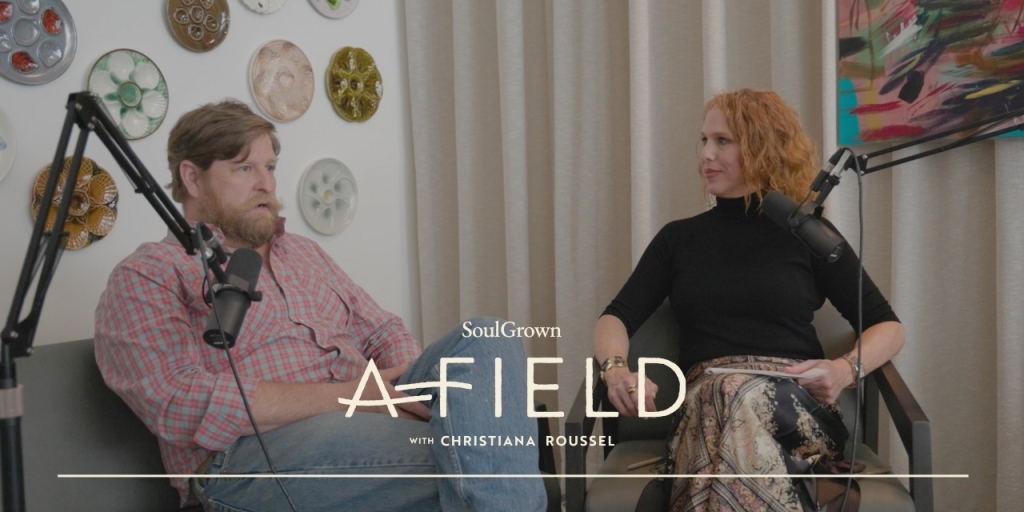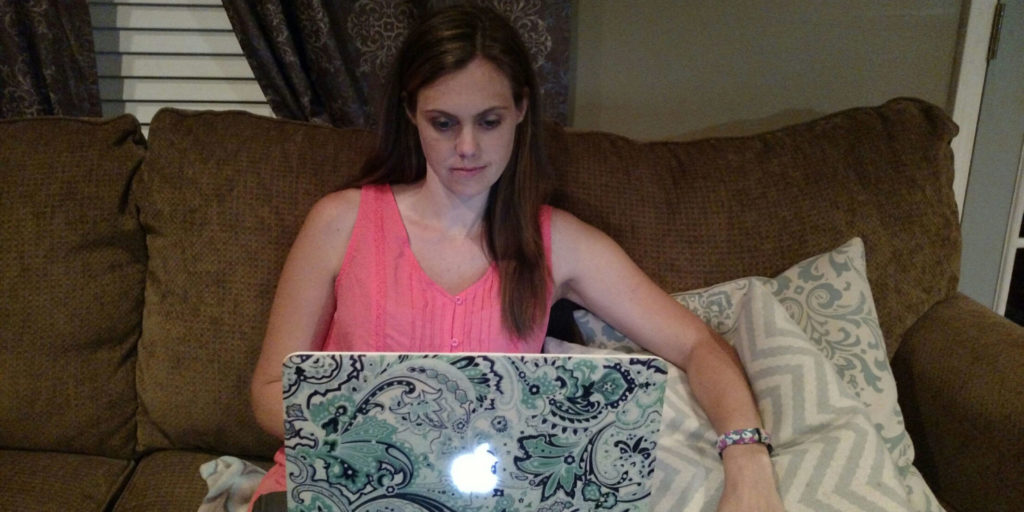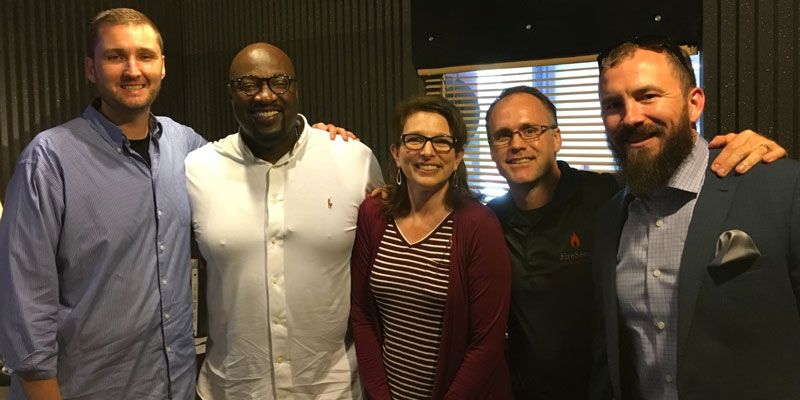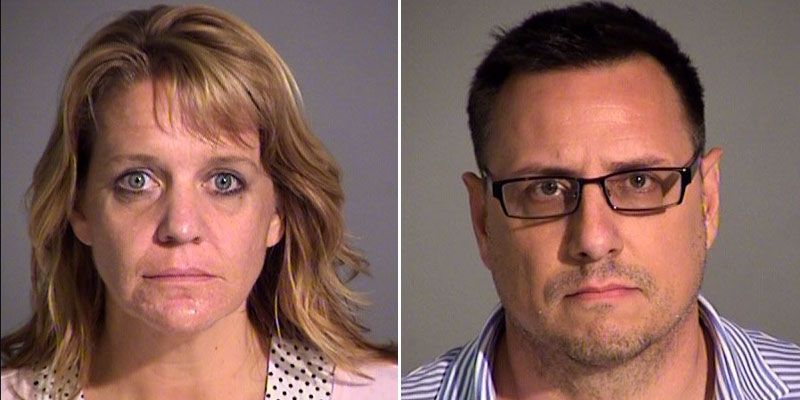Cord Sachs is a Birmingham-based leadership expert and the CEO of FireSeeds, a company that helps companies find and grow great leaders and “the company behind many of Alabama’s fastest growing companies.”
The full conversation with Mr. Sachs can be heard on the Yellowhammer Radio podcast or in the video above, and a lightly edited transcript of his interview with Yellowhammer’s Andrea Tice and Scott Chambers can be read below.
Subscribe to the Yellowhammer Radio podcast on iTunes or Stitcher. Learn more about Cord Sachs and Fireseeds at www.fireseeds.com
Scott Chambers: Welcome back Yellow Hammer Nation. You’re listening to Yellow Hammer Radio. Super station 101, WYD. I am Scott Chambers.
Andrea Tice: Andrea Tice here, as well. Dave on the ones and twos. We’re bringing Cord Sachs in.
Scott Chambers: Yes we are. Mr. Cord Sachs from Fire Seeds. How in the world are you today, sir?
Cord Sachs: Man, I’m doing great. I can’t complain at all. Much better than the weather outside.
Scott Chambers: Well, if you complain it doesn’t do any good. I learned that a long time ago. There’s no need to complain, right?
Cord Sachs: Absolutely.
Scott Chambers: Cord, it’s good to have you on the program. Let’s just get right to it. Over the last two weeks, we talked about how to determine if we have a good job or a great job. If we determined that our job is just okay, or maybe it’s not so great, ways that we could find out if there’s another opportunity, or a seat on the bus that could be a better fit for us. We’re going to continue that today, right Cord?
Cord Sachs: Absolutely. Yeah, we’re going to talk about really continuing that conversation around, what if we have determined that there’s not another seat on the bus. It’s not a good fit. My job’s not a good fit right now. I’ve had discussions and conversations, or I’ve looked into just the other opportunities within my current situation and there’s really no other seat on the bus to move into. What do we do next?
Scott Chambers: Yeah, what do we do? What do we do? How do we start looking elsewhere is we find out this seat ain’t comfortable for me?
Andrea Tice: Yeah. How do we get off that bus without getting hurt?
Cord Sachs: That’s right. We’ve got to get off the bus. Today we’re going to talk about what I call the calling fit discovery process. We want to have two things happen here. We want to identify what are we called to do. By calling, I mean that the larger story of where I’m supposed to have the next season of impact in my life. In many of the shows, we’ve talked about this 80,000 hours we spend at work. It just makes sense. If we can align what we do at work with what we’re called to do, or how we’re supposed to contribute to this world. It makes a lot more sense.
Then there’s a pragmatic side of that, to where there should be a process to really determine is this a good fit for me. Does it match my skills and what I’m good at, what I like to do. That’s where we’re going. I would say, as you start this process, the number one thing you’ve got to do is keep working hard at your current job. That’s the story that’s going to be told from your current employer, your current boss, the current people you work with about who you are to your next opportunity. The most important thing is to keep working hard, be a diligent steward of the opportunity, even though you’ve determined it’s not where you’re supposed to stay long term. Then we’re just going to come up with a plan. Let’s come up with an intentional plan to move through a clear process, so we can determine what would be the best fit next.
Andrea Tice: How much of this process will include just looking at my current situation, my current job, to really understand why it’s not a good fit, before I move on?
Cord Sachs: Yeah. I think that’s exactly where you start. That’s what you know right now. That’s what’s moved you to this decision. The, “Hey this is not where I want to remain.” Let’s be very intentional to think about why that’s the case. Let’s come up with a pros and cons list of what I like and what I dislike about the job. We talked about the three hedgehog questions. Am I passionate about this? Can I be the best in the world at it? Is it meeting my financial expectations for my career? Which of those questions we had to answer no to, will start digging in. If you realize, “I’m just not successful here. I’m not getting the results I need. I can’t be the best in the world at this,” well, why? Let’s talk about, think about the specifics of your job that are causing you not to perform. Just come up with a really simple list and an inventory of why this scenario now is not working.
Scott Chambers: Cord, you-
Cord Sachs: Again, you’ve got to look into the current situation.
Andrea Tice: Okay.
Scott Chambers: Looking in there. Okay. You’ve talked about, on previous shows about the importance of looking at your own personal identity, personality and preferences. Is that something that we should apply, or I should apply, as I look in at myself?
Cord Sachs: Absolutely. I think that’s where most people miss, is they realize, “I need to move on.” They look to the next job, instead of thinking, “Okay, I’m going to look into my current situation, understand why it’s not working. And then look into my own identity and begin to find the clues.” It’s really simple. God has created each of us with a specific, unique personality and wiring because we’re supposed to accomplish specific works that he’s prepared for us. He has been calling for our lives, that we’re supposed to move in, in different seasons. To have different impact on different people. When we can look into the identity piece, the hard-wiring of who we are, and we get the clues around the unique preferences that we have. That aren’t based on your situation. They’re based on how God designed you. Then we can begin to put that into the equation, as well.
You may find out, I’m in this situation now where I’m in a cubicle all day long behind a screen, doing a lot of data analysis. I really see from this instrument that I’m supposed to be around people and engaging and using my relational skills with people. That’s just not a part of this job. You begin to get clues that should confirm why you’re not supposed to be in this job and then give you clues to where you should be moving towards.
Andrea Tice: Once you accomplish this whole look in, which is very good, very valuable. There’s a point where you actually have to look out and say, “Okay, where can I fit?”
Cord Sachs: That’s right.
Andrea Tice: “Where can I find the job that’s going to accomplish what I’ve just realized about myself?” What do you do next?
Cord Sachs: That’s right. You take in personal inventory of your situation and of yourself. Your wiring, your preferences. Now you need to look out. You need to scan the horizon and begin to put a process in place again, that’s going to allow you to see what opportunities are out there. Then begin to match the opportunities with what you’ve learned from your current situation, your identity and who you are. Then begin to be able to say, “Hey, this is a job and an opportunity that I want to go after.” Very practically speaking, we want to build out what we call the calling sit bullseye.
The calling side of the bullseye, the first bullseye is the calling bullseye. It really has to do with the culture of the organization. Build a list, if you will. We’re going to put this into a bullseye that we’re going to shoot at that really would help you define the culture that you would thrive in. That’s the vision of the organization, the mission of the organization. That’s the type of people that work in this organization. The value of, is this an organization that spends a lot of time celebrating their people? Is this an organization that takes a lot of time, paying a lot of attention to detail and follow through? As you begin to build the bullseye around the culture, that’s when you can begin to see, is this going to be a calling fit?
Andrea Tice: So-
Cord Sachs: We’re not supposed to, yep go ahead.
Andrea Tice: Cord, as you’re building this bullseye, I’m thinking, in my mind I’m envisioning three rings. This is the outer ring of the bullseye. Is that correct? The over-encompassing.
Cord Sachs: Absolutely. You could think of this as the outer ring of the bullseye.
Andrea Tice: Okay.
Cord Sachs: There needs to be a culture within this organization that attracts you to it. That’s the story of who the company is, not just the job that it provides in a certain position.
Andrea Tice: Okay.
Cord Sachs: You want to be a part of the story of the organization that you could get excited about. How many times have you heard a sales guy say, “I just couldn’t get behind what I was selling. I didn’t believe in it. I didn’t believe that the company had integrity to really follow through with what I was selling.” The culture of the organization’s very important that we define what that looks like for us.
Andrea Tice: Yeah. You’re absolutely right. My husband, for a very short time, was a car salesman. A short time, like maybe two weeks, because he couldn’t get behind helping people get into debt. He just couldn’t do it. He ended up leaving that job.
Scott Chambers: Yeah. That would be a tough one, yeah. That’d be a tough career.
Cord Sachs: Calling’s a big part of it. Then of course, fit is just as important. You’ve got to join a company you believe in, but you also want to make sure you’re a good fit for that job. The next bullseye, if you will, the next couple rings on this bullseye, they’re going to be based on the position itself. What can I see myself … This is really going to go back to the two questions in the hedgehog. What can I see myself getting really passionate about? When I say passion, I mean gaining energy from. That when I go do it, I get more and more energy to keep doing it over and over again.
Then what type of position, what could I be doing, as I look at my list of the things maybe I was doing in my current situation, and realize half of these I’ve got to make sure that’s not in the scenario of the next job that I take. Then what are the things? If it is people, you want to make sure in the parameters of your job position that you get to spend a lot of time with people. You get to use your skills, your relational skills that are also going to fuel you as you’re around people.
Then as we think about the fit of, is this something that I can be passionate about, then obviously that usually plays also into could I be really good at this. Could I maybe be the best in the world at this job? As we begin to build that list of what are the skill sets, going back to identity and saying, “Okay. Here’s my identity. Here’s what needs to be in this job. Here’s what I need to be doing. I need to spend time with people. I need to be using my relational skills.” Maybe just like your dad, he loves sales. It doesn’t mean that he had to get out of all car dealerships or all sales altogether, but he did need to get out of that culture and get into another opportunity that gave him the opportunity to sell.
Scott Chambers: Very interesting.
Cord Sachs: Creating the clarity is what we’re going after here.
Scott Chambers: Cord, we are out of time, my friend. Tell us how people can get in touch with you and Fire Seeds.
Cord Sachs: FireSeeds.com. It’s as simple as that. I would love to help anyone engage in this conversation around their calling, around their fit. We help place purpose driven leaders in purpose driven organizations and help multiple their influence.
Scott Chambers: All right. See you all tomorrow. Bye.













